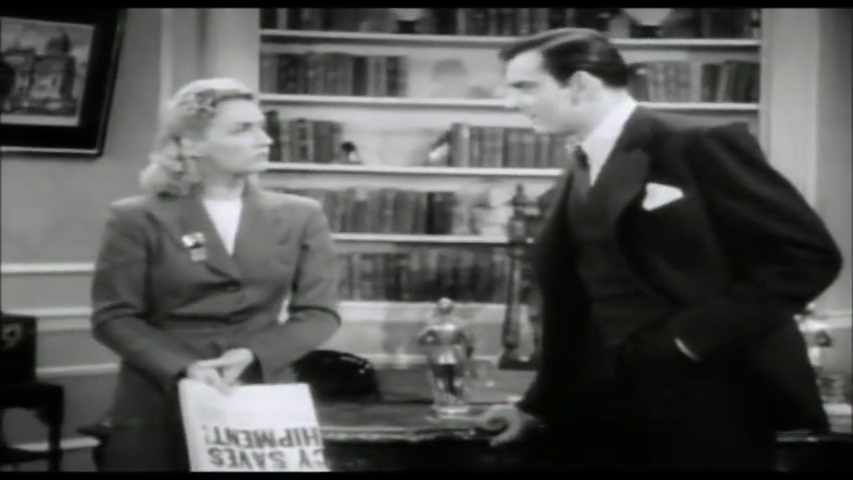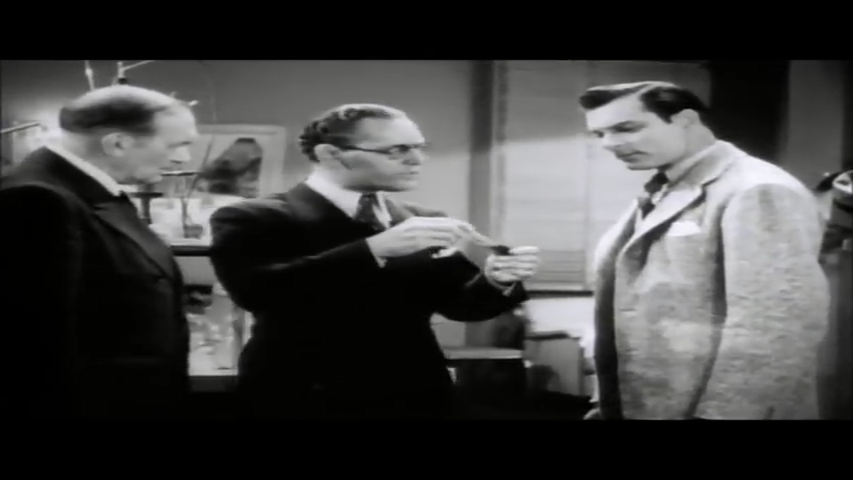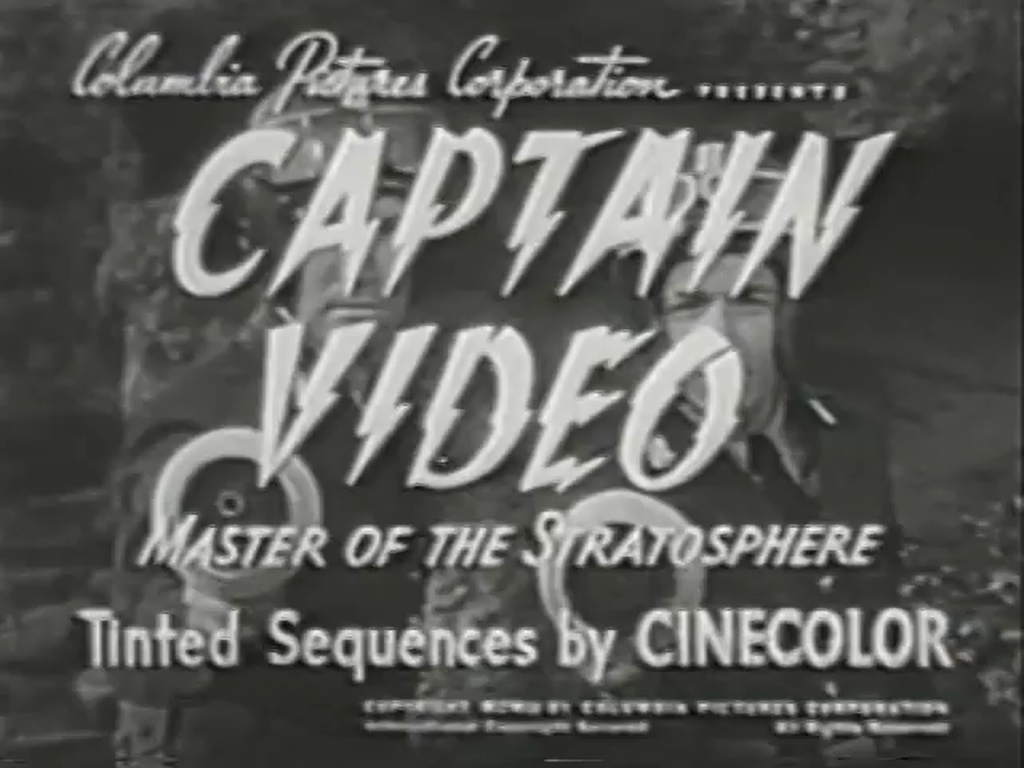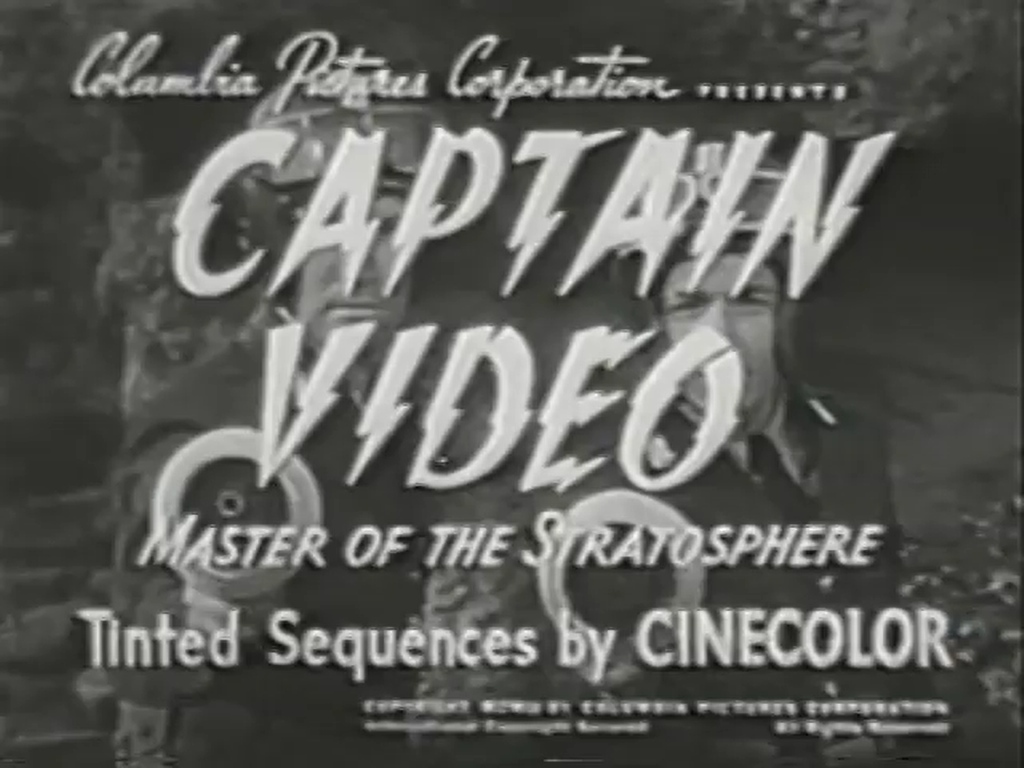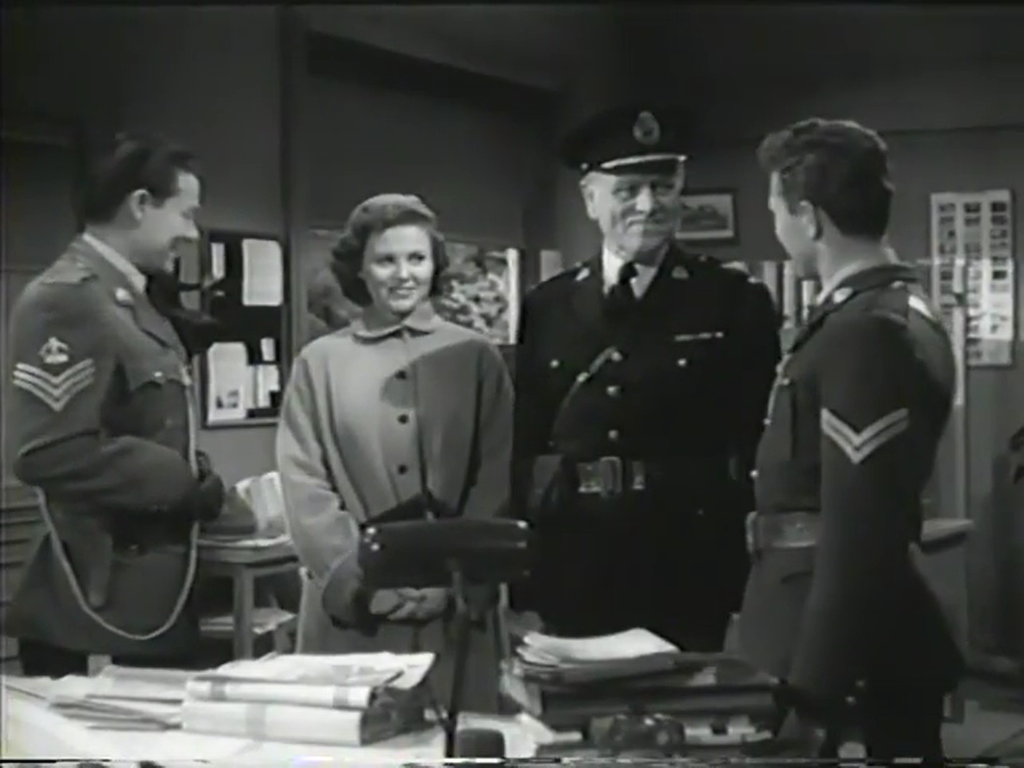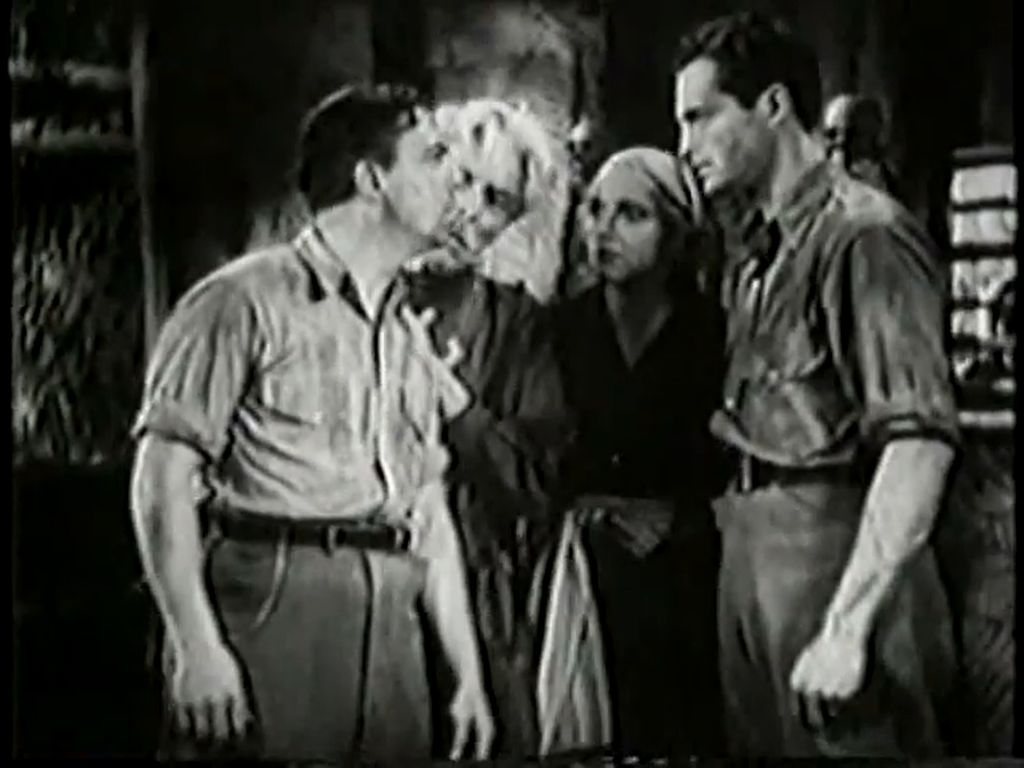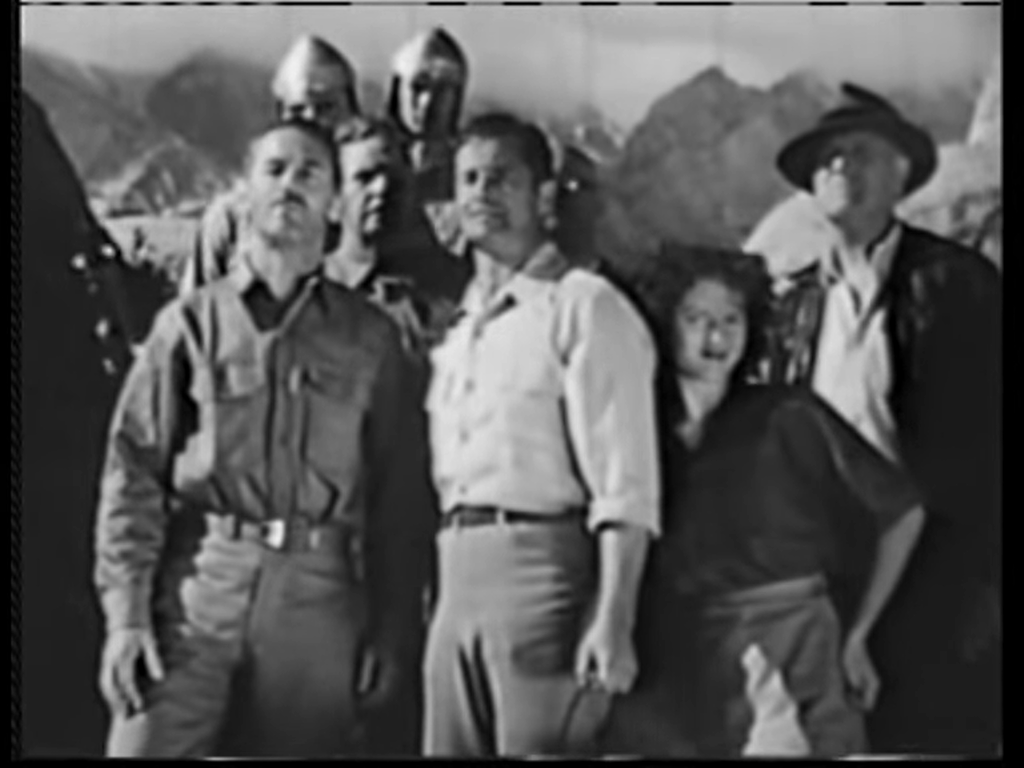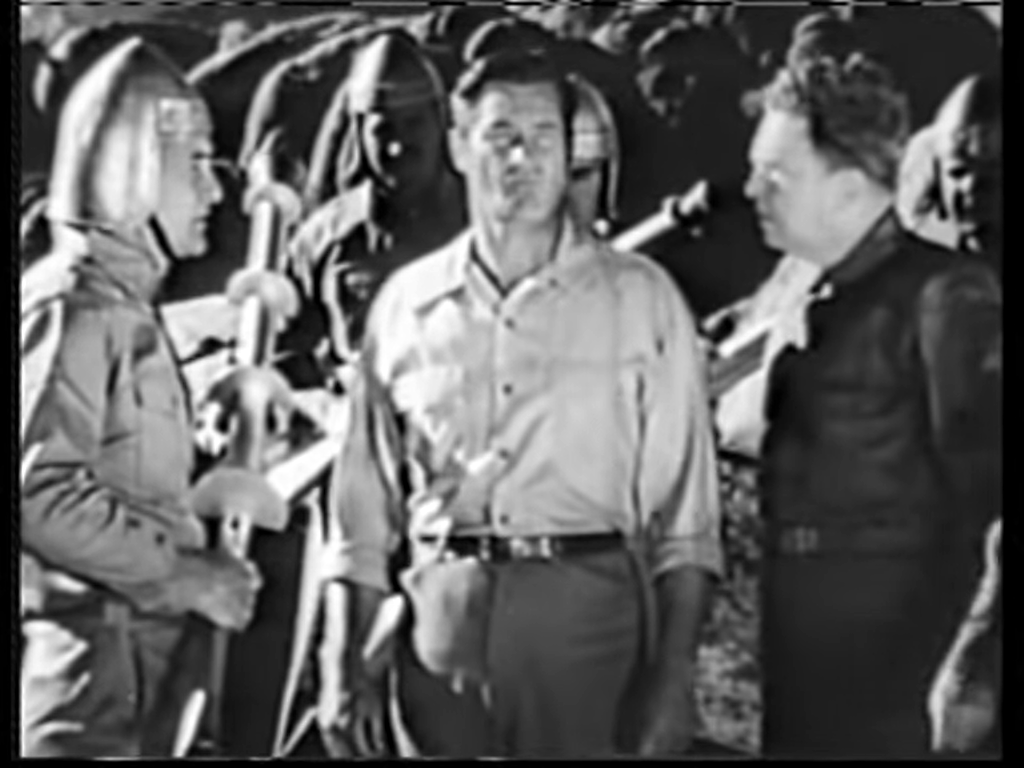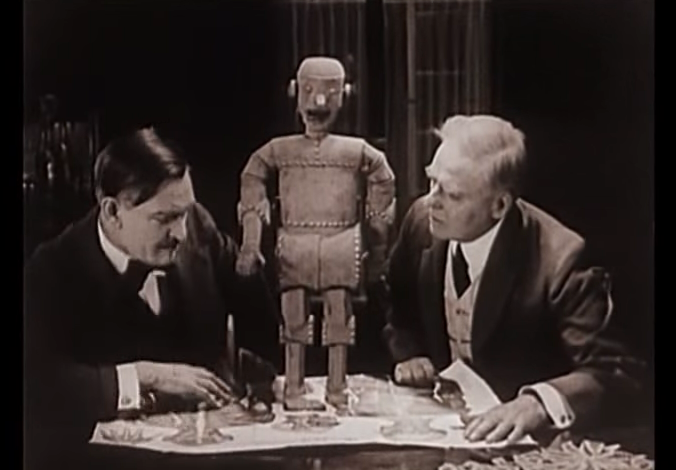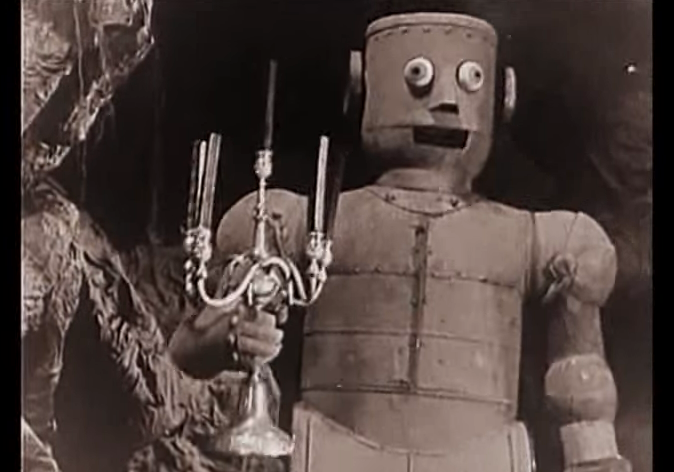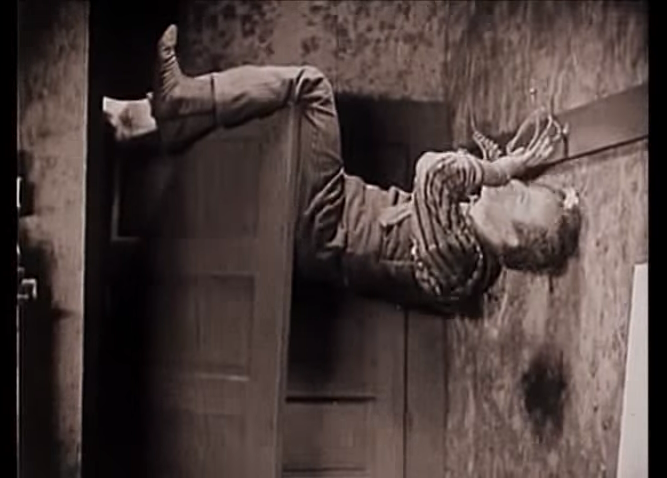-
#386 – Dick Tracy vs. Crime, inc.
Dick Tracy vs. Crime, Inc. (1941)
Film review #386
Directors: William Witney, John English
SYNOPSIS: Dick Tracy is assigned to deal with a criminal known only as “The Ghost”, who is able to turn himself invisible thanks to a special invention. The Ghost is after the members of a city crime council, who helped convict his brother Rackets Regan and sentenced him to death. It is a race against time for Tracy to stop The Ghost before he succeeds in killing all the remaining members of the council…
THOUGHTS/ANALYSIS: Dick Tracy vs. Crime, Inc. is a 1941 movie serial and the fourth Dick Tracy serial to be released in as many years. This time, Dick Tracy is on the trail of a master criminal who calls himself “The Ghost,” who also has the power to turn himself invisible thanks to a special machine. The Ghost is seeking to take revenge on the city crime council, who helped convict his brother Rackets Regan to death, and in the opening chapter, we see him take out one of the council members, and his daughter June Chandler, teams up with Tracy in order to stop The Ghost. The story combines two typical tropes of the movie serial format: one, an invisibility device which many serials have done, and two, the identity of the main villain is hidden behind a mask until they are exposed in the final chapter. As always, there’s nothing too unique about the way the serial uses these plot points, but again this Dick Tracy serial manages to use them better than its contemporaries, and create a well balanced serial with plenty of action and intrigue. The added sci-fi element makes it feel a little different from the previous Tracy serials too, which is what is needed in this fourth instalment. There is a fair amount of re-using stock footage from the previous serials for the cliffhangers at the end of each chapter, but honestly it doesn’t feel like that much of a problem, as you know they will always end up with Dick Tracy escaping just in time.
As the serial progresses, there is a range of villainous schemes that Tracy and his friends have to foil, as well as the mystery of The Ghost’s identity with adds an element of mystery to everything. There’s always plenty going on, and the dialogue never gets too dragged down in exposition. For this serial, Dick Tracy is the only returning character, although Billy Carr and June Chandler play the roles of Steve Lockwood, a fellow agent, and Gwen Andrews, Tracy’s secretary in an almost identical capacity. Ralph Byrd as Dick Tracy has always been the star of the serials, and as long as he returns, the rest of the cast are pretty inconsequential. The identity of The Ghost is kept secret throughout the serial, with suspicion falling upon various members of the council at different points, then shifted away as they are killed. Everything is tightly-knit together, and even though it does cut down the cast and re-use some footage, I think it may be the best serial out of them all: it perfects what it is trying to do, and even though it uses plot devices that have been seen in the serial format before, it does them a lot better. If you were going to only see one Dick Tracy serial, I would probably say to choose this one, as it exemplifies not only the best of Dick Tracy, but some of the best examples of the serial format.
-
#384 – Dick Tracy’s G-Men (1939)
Dick Tracy’s G-Men (1939)
Film review #384
Directors: William Witney, John English
SYNOPSIS: F.B.I. agent Dick Tracy has successfully captured the international spy Zarnoff, who has been sentenced to death. However, he manages to escape, and picks up where he left off attempting to steal or sabotage military equipment to sell to the ‘three powers’, as Dick Tracy once again tries to stop him.
THOUGHTS/ANALYSIS: Dick Tracy’s G-Men is a 1939 film serial and the third Dick Tracy serial. In the opening, we see a film showing how F.B.I. agent Dick Tracy successfully captured foreign spy Zarnoff, who has now been sentenced to death by gas chamber. While in jail awaiting his sentence however, Zarnoff is sent a newspaper which is laced with a substance which when ingested, causes him to appear dead and stop breathing before he is taken to the gas chamber. While his body is being transferred, members of Zarnoff’s gang hijack the ambulance and steal his body, subsequently reviving him since the substance caused him to stop breathing before he went into the gas chamber, therefore did not breathe in any of the lethal gas (yes, it sounds a bit farfetched). When Dick Tracy learns of Zarnoff’s escape, he again attempts to catch up with him, as Zarnoff has sworn revenge against Tracy. The story, split into fifteen chapters, revolves around (as you would expect) Tracy attempting to foil the numerous schemes of Zarnoff, which, as is a staple of the Dick Tracy serials, outperforms others in the genre by having plenty of variety and imagination, splitting the time between investigation and action scenes. It still sticks rigidly to the serial format, and is essentially more of the same, but its predecessors were popular, so there isn’t really much need to drastically change them. The story around the spy Zarnoff attempting to sell American secrets to the “three powers” would have been more relevant to the time it was released, as World War II had essentially begun, so the theme of spies and espionage would have been particularly poignant, with the “three powers” clearly being a reference to the axis powers.
One more significant change in Dick Tracy’s G-Men was the thinning out of the cast. A number of the characters do not return, including Mike McGurk and Junior, who mostly provided the comic relief, and so the film does feel a bit more serious, again with the back drop of a world war looming. In fact, Ralph Byrd, who plays Dick Tracy, is the only returning actor. Even though the characters Steve Lockwood, a fellow F.B.I. agent, and Gwen Andrews, Tracy’s assistant still show up, they are played by different actors. The character Zarnoff is of particular interest, as he looks like a cross between Stalin and some east-Asian influences, which makes sense given the time of release, and America’s animosity to that area of the world (there were many serials produced around the second World war that utilised a villain that was made to look Chinese or east-Asian).
The pacing of the film is fairly standard, with a new scheme showing up every two or three chapters to keep things interesting, and the standard cliffhanger at the end of each chapter to entice viewers to return to the theatre next week to the next chapter. The ending sees Zarnoff and Tracy crash a plane in the desert, with the two handcuffed together, they are desperate to find water when eventually finding some, Zarnoff knocks Tracy out and uncuffs itself. When Lockwood shows up and finds Tracy, they see that the water contains Arsenic, and shortly find Zarnoff’s body (offscreen) as he has died from ingesting the water. Not exactly a thrilling conclusion, but they never are after investing so much time into these serials they never end on much of a high note. Nevertheless, Dick Tracy’s G-Men is more of the same, but it still maintains a position well above most of the format in terms of action, pacing and characters.
-
#384 – Dick Tracy Returns (1938)
Dick Tracy Returns (1938)
Film review #384
Directors: William Witney, John English
SYNOPSIS: F.B.I. G-man Dick Tracy is on the trail of the Stark family: A criminal gang consisting of “Pa Stark” and his five sons. When new G-man recruit Ron Merton is murdered by the Starks when they hijack a convoy, Tracy swears revenge and attempts to track them down while thwarting their many villainous schemes.
THOUGHTS/ANALYSIS: Dick Tracy Returns is a 1938 film serial and the sequel to the Dick Tracy serial released a year earlier. The story this time revolves around Dick Tracy trying to thwart the criminal enterprises of the Stark family criminal gang, led by Papa Stark and his five sons Champ, Trigger, Dude, Kid and Slasher (great names). The Starks have a range of schemes and crimes they try to carry out, and this gives the serial enough variety to see it through, as Tracy and his team have to stop them across land, sea and air, resulting in an array of chases, as well as some good old-fashioned detective work. The original Dick Tracy serial was a strong mix of serial elements that kept its momentum across its fifteen chapters. Dick Tracy Returns emulates that success and continues it. There’s not much new here, but since the original was a success, there isn’t any need to fix what is not broken. And of course, in an era without repeats on television or home media, it was easier to repeat things on screen as the only way to watch these serials was to go to the theatre every week for the next instalment.
Most of the protagonists from the first serial return with the same actors, which provides a good sense of continuity. The only real change is that a different actor plays Junior, but that’s not much of a distraction. There’s not much character development, but every character has a role to play, from the heroic Dick Tracy and Steve Lockwood, the humour from Mike McGurk, and Tracy’s assistant Gwen, there’s a decent amount of variety in the characters. The villains are also fairly interesting, and showing Tracy stop the individual sons of papa Stark makes the story flow a little easier. Like the first serial, Dick Tracy Returns is a good example of the movie serial format, and has plenty of action, distinguishable characters and thrilling cliffhangers to keep viewers coming back. It’s mostly par for the course for the serial format, but a good example of it.
-
#381 – Dick Tracy (1937)
Dick Tracy (1937)
Film review #381
Directors: Alan James, Ray Taylor
SYNOPSIS: F.B.I. G-man Dick Tracy is on the trail of the criminal gang known as the Spider Ring. They have invented a flying fortress called The Wing and it is Tracy’s job to find a way to stop it and the gang’s evil schemes. Alongside this, he is also trying to find his brother Gordon, who has gone missing, and unbeknown to Dick, has been brainwashed by the Spider Ring to do their bidding…
THOUGHTS/ANALYSIS: Dick Tracy is a 1937 movie serial based on the comic book character of the same name. The serial stars, unsurprisingly, Dick Tracy, who is a “G-man” working for the F.B.I. investigating crimes, specifically trying to bring down the criminal gang known as the Spider Ring, who leave the mark of a spider on their victims before they kill them. Dick also has to find out what has happened to his brother, who has gone missing, and unbeknown to him has been captured by the Spider Ring and been brainwashed into becoming their servant. The serial’s story unfolds across a lengthy fifteen chapters, with the usual serial shenanigans taking place. Despite the length, the serial does a good job of keeping things interesting, and has a number of mini-arcs in the story to keep things varied. Dick Tracy’s character as a criminal investigator plays a strong role in the story, as he is actually investigating the crimes and following the evidence, rather than just showing up and getting into a fistfight like a lot of these serials.
The action scenes are also well varied, with their being chases across land, sea and air. The aerial scenes are probably the most interesting, as they are fast-paced and have plenty of stunts. The real sci-fi element of the serial comes in the form of The Wing: a large plane that resembles a flying fortress crossed with a stealth plane. It is the sort of thing that would not have been seen before when it was released, so it certainly gives the serial some originality. While The Wing plays a large role in the earlier chapters, it appears less frequently in the later ones, which is a shame since it probably had some more potential, but there’s plenty of other things going on so it doesn’t feel like the serial runs out of steam.
As mentioned, Dick Tracy’s role as a criminal investigator gives him plenty to do, and separates him from the similar white-male leads of these type of serials by giving him a unique character trait. The cast of supporting characters is quite large, but they all serve a purpose and you can tell them apart. The comedic relief in the form of the young Junior and his guardian McGurk aren’t overplayed, and provide just enough of a contribution to the story without being distracting. The villains, including the leader of the Spider Ring known as “The Lame One” are also well varied, including the rogue doctor Moloch who performs the operation to brainwash Gordon Tracy (who also has his face changed, which is rather pointless as none of the heroes see his face that would recognise him). The Lame One’s identity is kept a mystery until the end, but if you follow the serial closely, you can probably tell who it is, and it doesn’t act as too much of a revelation. Nevertheless, an overall interesting cast that are recognisable and add different dynamics to the serial.
The special effects of the film are pretty good for the time, and while a lot of the plane stunts are done with models, they are still convincing. A lot of the aerial stunts are pretty implausible and flying the face of physics, but given that cinema goers in 1937 would probably have not been in a plane (or maybe even seen one), it’s not going to break the immersion. Overall, Dick Tracy manages to take the typical aspects of the serial format and excel with them: the action is varied, the story is full of drama and suspense, the characters are well-defined, and there’s plenty of content to keep viewers coming back to the theatre every week.
-
#379 – Captain Video: Master of the Stratosphere (1951)
Captain Video: Master of the Stratosphere (1951)
Film review #379
Director: Spencer Gordon Bennet, Wallace A. Grissel
SYNOPSIS: The heroic Captain Video and his Video Rangers from across the globe help maintain peace on the planet Earth, but when Earth becomes subject to meteor bombardments from the planet Atoma, Captain Video must find a way to thwart the evil schemes of it’s leader Vultura before it is too late…
THOUGHTS/ANALYSIS: Captain Video: Master of the Stratosphere is a 1951 movie serial. The serial stars (as the title suggests) Captain Video, the leader of an organisation called the Video Rangers, who help protect the Earth. When the Earth becomes subject to meteor bombardments originating from the planet Atoma, Video must stop them before they can invade the Earth. The plot resembles the vast majority of sci-fi serials, which copy the highly successful Flash Gordon and caught the genre in a thinly-veiled repetition of its plot and characters for over twenty years. A lot of the story revolves around Captain Video trying to prove that the scientist Dr. Tobor (yes, that is ‘robot’ spelled backwards) is working with Atoma’s leader Vultura, as Video and Vultura try to outsmart and thwart the other’s plans. I think this format and plot structures were gotten away with for two reasons: one, there was no way to re-watch old serials once they had first aired at the theatre, so new ones could come out with the same story and similar characters; particularly since serials such as this would be aimed at kids, who would not have seen earlier serials. The second reason being that the second world war probably didn’t leave much room or money for the development of anything too original or ambitious, as resources would have been focused elsewhere. Nevertheless, by the time this serial was released in 1951, there probably should have been some effort to change the formula or offer something new.
Despite it’s lack of originality in the story department, there’s still a decent amount of variety going on. The early chapters see Video travelling to the planet Theros, where the peace-loving people are under attack by Vultura’s forces, and Video has to teach them to be guerrilla fighters and fight back. Again, this plot structure shows up in many previous serials. The next major chunk of the serial consists in the back-and-forth between Tobor and Video, as they try and outdo each other on Earth. Video and Vultura only meet in the final half of the last chapter, which feels like a waste. The serial however, does keep things interesting with a whole host of gadgets and inventions that would undoubtedly spark the imaginations of youngsters watching. The guns that the Rangers use that shoot out sparks are quite a nice effect of the time. However, the serial often falls into the trap of explaining what is going on and what all these inventions do rather than actually showing them, mostly due to budget constraints, but often the plot is explained before it happens, leaving little surprise or tension. The inventions too have bizarre technological names, and accompanied techno-babble that try to justify the implausible things they do.
Most of the characters are based off the ones on the TV series, with Captain Video being the typical white American male hero that is the star of all these serials. His younger sidekick is strangely only referred to as “the Ranger” and never given an actual name. This is in keeping with the TV series, but other rangers are shown to use their own names, so it’s odd that he doesn’t. Maybe it’s a way to get kids to imagine themselves in the role of the young teenage sidekick, as anyone could be “The Ranger”. There’s also Ranger Gallagher, who does all the technical stuff at Video headquarters, and Vultura clearly has some east Asian influences in his design, again echoing the “Ming the Merciless” type villain that originated in Flash Gordon. One final note about the characters is that while you will expect these serials to only feature a white cast, there is not a single woman anywhere featured in the serials fifteen chapters. Often there is usually a solitary token female character that sometimes serves as the protagonist’s love interest, but there is none at all here, not even in any of the backgrounds. I suppose the lack of a female character could be attributed to the fact this is geared towards a younger, male, audience, who would not be interested in a female character or a romance sub-plot, but having this cast of inter-changeable white men interact with each other really emphasises the monotony of the story at points.
The serial was directed by Spencer Bennet, a veteran of these kinds of serials, so he had plenty of experience in what to do. Some of the effects are fairly decent; as mentioned, the ray guns the Video Rangers use is pretty cool, and their super-fast car stands out with its unique look. There is also a ‘space platform’ which allows transportation between earth and Atoma, which apparently is millions of miles away. Captain Video also has a rocket ship he travels in, which again adds some variety. Some of the effects (such as the rocket ship in flight) are done through using hand-drawn animation, which allows a lot more freedom in terms of effects, although this is not the first time this was done, having been integrated into the Superman serial a few years earlier. Overall, I think I can place the Captain Video serial just above average in the miasma of similar sci-fi serials: it has a lot of the well-worn tropes and characters, but has some decent effects and various inventions that add a bit of extra spice. It’s obviously meant for a younger audience, but there’s enough content for those who haven’t seen such a serial before to enjoy.
-
#377 – Canadian Mounties vs. Atomic Invaders (1953)
Canadian Mounties vs. Atomic Invaders (1953)
Film review #377
Director: Franklin Adreon
SYNOPSIS: Canadian mountie Don Roberts is teamed up with intelligence operative Kay Conway to investigate reports of spies operating in the area attempting to set up covert missile bases in the Canadian wilderness. Don suspects two members of a group of settlers travelling across the wilderness are working for the spies, and so goes undercover in an attempt to expose them. Meanwhile, Beck and Reed, the spies lackeys, are secretly working to discourage the settlers from travelling to the site where Marloff, the foreign spy, wants to build his missile bases…
THOUGHTS/ANALYSIS: Canadian Mounties vs. Atomic Invaders is a 1953 serial. I think the title alone should grab anyone’s attention, so let’s see if there’s any substance underneath it…
Mountie Don Roberts is visited by his boss and intelligence operative Kay Conway to investigate the presence of foreign spies in the area. They believe that some of the settlers moving through the town are working for the spies, and so Don goes undercover with them to try and uncover their identity and motives. The first part of the serial sees Don travelling through the wilderness with these settlers as he tries to foil the spies schemes. This leads a variety of associated perils such as avalanches, dog-sled chases and other such perils of the wilderness. These sorts of sequences you don’t see too often in these serials of the time, so it is something a little different. The main plot of the serial though is nothing too special, with a constant back-and-forth chase between the heroes and villains. The “atomic invaders” are just plain foreign spies and also not very interesting. In 1953, these kinds of serials were dwindling in number as studios turned towards the feature film (and the b-movie), and the introduction of television would mean that these serials would be viewed at home each week rather than getting people to go to the theatre. With that in mind, the chapters are all (with the exception of the first one) just over thirteen minutes long, which seems a waste of effort going to see such a short film. I suppose a positive of this is that the chapters aren’t drawn out with pointless dialogue and scenes that go nowhere…but that said, there is still plenty of it to fill out the time…
After Don foils Marloff’s (the foreign spy) plans to stop the settlers, the spy changes the location of his proposed missile sites which will destroy the U.S. cities to allow his country to invade with little resistance. This “foreign country” is never mentioned by name, but since the cold war was beginning to get underway at the time, I think it’s fairly obvious which country they are referring to. The rest of the serial involves a more usual set-up of fistfights, car chases and cliff hangers that will be familiar to serial watchers. Again, at this time, the format really had been exhausted, and it can offer no real surprises or originality. Some serials hide the identity of the villain until the very end so as to maintain a sense of intrigue throughout, but this serial does not. It might have been a good idea to keep the identity of Smokey, a village resident who is Marloff in disguise, a secret until the end. Instead, it reveals it almost instantly, and the conflict between the heroes and villains really lacks any dynamic.
Given that the film has a variety of scenes in different locations, there is a lot of stock footage used and shots in the wilderness are cobbled together in a studio with painted backgrounds that look rather unconvincing. The chase scenes in cars and boats look alright, and the explosive cliffhangers have an impact, but the format leaves every twist in the story all too predictable, and despite the bizarre title, Canadian Mounties vs. Atomic Invaders fails to contribute anything unique to a formulaic format.
-
#375 – The Lost City (1935)
The Lost City (1935)
Film review #375
Director: Harry Revier
SYNOPSIS: Extreme weather is causing mass destruction across the Earth, with seemingly no known explanation. Electrical engineer Bruce Gordon manages to use one of his machines to trace the source of these disturbances to an unexplored region of central Africa. He leads an expedition to the area to investigate and ends up discovering a lost city ruled by a madman who is intent on attaining absolute power from his machines. Bruce must join forces with the various people in the region, and stop the evil Zolok from using his machines before the world is destroyed…
THOUGHTS/ANALYSIS: The Lost City is a 1935 science-fiction, twelve part film serial. in the opening, we see storms ravaging the cities of the world, causing mass destruction. The world is unable to find the cause of these freak weather events, until electrical engineer Bruce Gordon uses one of his inventions to locate the source in an unexplored region of central Africa. Bruce leads an expedition to the area withe his friend Jerry Delaney, and when he arrives at a trading post, a man named Butterfield stumbles in injured, telling of a lost city beneath Magnetic Mountain guarded by giants. Believing there is a connection between Magnetic Mountain and the storms, Bruce investigates and finds the lost city is real. There, a man named Zolok is forcing Manyus, a scientist, to construct inventions which he believes will help him rule the world. The opening chapter of the serial is typically full of exciting effects and setting the stage for a thrilling adventure. As I’ve mentioned before in other serial reviews, the opening chapter is often the most thrilling and interesting, as it is meant to entice viewers to return to the theatre every week to watch the subsequent parts. These serials can quite quickly run out of steam, as they are made on a low budget and there is a lot of re-used settings and back-and-forths between the heroes and villains that can get repetitive. With The Lost City though, this repetition is kept to a minimum as there’s a number of distinct locations, and a large cast that gets introduced as the story goes on, so these new elements continually change the dynamic of the plot. Of course, there’s also plenty of daring cliffhangers at the end of each chapter, with lion pens, giant spiders and all sorts of devious traps that will encourage viewers to return next week. The overall story is definitely stronger than many similar serials I have seen.
As I mentioned, the cast is fairly large, and are somewhat diverse. The “giants” are pretty cool, and have a menacing presence. The big problem here though, with the film being set in central Africa, is the film’s depiction of non-white races. The “native tribes” are portrayed as very typical, primitive people as very much stereotypes of what western countries at the time were taught Africa to be. The fact that the film does not further pinpoint the location other than “Africa” again shows how the entire continent is ill-defined by said countries. When the “Arabs” shows up around half-way through the serial, they again are portrayed in a stereotypical fashion. Both of these groups, when they are supposedly speaking in their own language, is clearly just gibberish being shouted by the actors, which again just reinforces the dismissive attitude to non-white cultures. i think the main villain is designed to be similar to an east Asian person as well, just to round off the serial’s inclusion of all races. The portrayal of the black giants is clearly meant to make them as menacing as possible too. On top of all this, there is a plot element that Manyus has invented a medicine that can turn black people white. While the film does not label this as a “cure” for being black, it does feel that way at points, and really just compounds the fact that this film is horrifically outdated, and racially dismissive/ignorant.
The Lost City really shines through in terms of its story, and it paces itself well throughout the twelve chapters by continually introducing new characters and dangers in order to keep things fresh. In this respect, it avoids one of the significant problems that plague the serial format. However, it’s depiction of non-white races is horrifically ignorant and outdated, and really is non-redeemable. Yes, it is a product of it’s time, but I do not feel that it is enough of an excuse to dismiss its harmful racial depictions.
-
#373 – Brick Bradford (1949)
Brick Bradford (1949)
Film review #373
Director: Spencer Gordon Bennet
SYNOPSIS: Brick Bradford and his friends are assigned to visit the lodge of the scientist Doctor Tymak, who has developed “interceptor ray” that can intercept and destroy enemy rockets. It’s potential to be developed into a death ray as well has attracted the attention of the foreign spy Laydron, who wants to steal the ray. Brick and his friends must fight to keep the ray from falling into the wrong hands, and help Tymak finish his research as they travel across time and space to defeat the villainous Laydron and his goons…
THOUGHTS/ANALYSIS: Brick Bradford is a 1949 movie serial based on the comic strips of the same name. The opening introduces Brick Bradford and his friends Sandy Sanderson (yes that is apparently his real name), Professor Salisbury and his daughter Jane. They are visited by a U.N. official to assigns them to aid the work of Doctor Tymak, a scientist working on a secret project who may be the target of foreign spies. The spy Laydron manages to get to Tymak first, and while Tymak flees, Laydron pretends to be him when Brick and his friends get there in order to capture them. The plot of the serial follows the standard serial setups, with a constant back-and-forth between the heroes and villains, fist fights, getting captured, escaping and daring cliffhangers. I suppose what makes the serial unique is that it is a mix of all the usual elements of the format thrown together into one. For example, the opening third deals with Tymak fleeing to the moon after Laydron trying to capture him and Brick going to rescue him. While there, they get caught up in a civil war between a dictator and the rebels who want to restore democracy. This part of the story is very similar (practically identical) to a Flash Gordon serial, and while it will offer no surprises to viewers familiar to said serial, it offers an interesting setting and some fun traps. The next part of the film involves Brick and Sandy going back in time to find a note buried in a treasure chest that has the formula necessary to complete the interceptor ray. They get caught up in a battle between some sailors and a native tribe and the whole setting again offers something different. The third act revolves around the more standard serial plots of kidnapping, fist fights and chases as Laydron tries to get a hold of the interceptor ray. Add to all this the car chase scenes, invisibility devices and convoluted death traps and you’ve got a full-house in movie serial bingo.
The problem with the story is that while it does have plenty of variety, its different parts feel inconsistent with each other. The first part set on the moon is very similar (identical) to a Flash Gordon serial, and is probably the best written part, with a host of identifiable characters and plenty of danger and traps. The second part set in the 18th century is a bit more light-hearted and silly. With Sandy often making plenty of humourous quips. After these adventures throughout space and time, the final part resorts to the typical back-and-forth between the heroes and villains as they chase each other across the few sets the serial has. This is the weakest part of the serial, as it is difficult to top the first two parts. One reason for this disparity is that each part is written by a different writer, and clearly they all have their own ideas of what should be going on in the serial. The director, Spencer Gordon Bennet, did a number of these film serials, but his expertise doesn’t really fix the problems (he also directed the Batman and Robin, serial and after Brick Bradford the Superman serials, which were much better).
The movie serial format is a very outdated format. It’s multiple episodes re-used the same few sets as they were typically constrained to a low budget and would have to stretch what they had as far as possible (yet would keep viewers coming back to the theatre every week to watch the next instalment). Brick Bradford manages to have a good enough variety of settings thanks to the varied story, and is also aided by the fact that there are plenty of outdoor scenes. Obviously the moon having a breathable atmosphere and people living on it is a bit far-fetched today, but would have been somewhat believable back when the serial was released. The “time top” that Brick and Sandy use to travel back through time in is probably one of the first depictions of a time machine on film too, and I can imagine that it sparked people’s imaginations when they saw it for the first time. The characters themselves are all a bit dry and without merit, and Brick doesn’t really stand out alongside the Flash Gordon’s and Buck Rogers’ of the movie world. Overall, Brick Bradford can best be summed up as a “greatest hits” of the sci-fi movie serial: it has everything it needs from death rays, aliens, time travel, invisibility devices, mobs, car chases, convoluted death traps, all-american heroes, and a single female character. However, all of these elements feel very disjointed from one another, and the mix of writers with different perspectives gives the serial an uneven tone. There is a decent amount of variety throughout the fifteen chapters, but by the end the film has exhausted everything the format has to offer and it clearly shows. A valid attempt with familiar concepts, but nowhere near the best that the serial format has to offer.
-
#349 – The Master Mystery (1918)
The Master Mystery (1918)
Film review #349
Directors: Harry Grossman, Burton L. King
SYNOPSIS: Balcom and Brent run International Patents inc., a shady company that buys the patents for people’s inventions and prevents them from ever being released to the public, thus protecting their benefactors. Brent has a change of heart and wants to make amends, but Balcom is having none of it. When the adventurer Flint returns home, he meets with Brent, but the meeting ends up with them contracting “Madagascar madness”, a disease that leaves them laughing until they end up comatose. Quentin Locke, a man employed by Brent, is accused by Balcom of having infected them, and seeks to have him arrested. To make things even more problematic, an iron automaton begins wreaking havoc in the house, and so Quentin must unravel the mystery and prove his innocence before it is too late…
THOUGHTS/ANALYSIS: The Master Mystery is a 1918 silent movie serial originally composed of fifteen parts. One of the big draws of this serial is that it stars famous escapologist Harry Houdini, and his name is all over the credits in order to draw people in to see the serial. The story centres around the International Patents inc. company, which allows inventors to establish their patents and distribute them. However, Balcom, the co-owner of the company, starts to withhold the patents from release in order for the company’s partners and investors to keep a competitive edge. This does not sit well with Brent, the other co-owner, and the two are at odds with one another when the film starts proper. Balcom is also trying to get Brent to marry his daughter Eva to his son Paul, and thus further tightening his grip on the company. However, Eva is in love with Quentin Locke, a member of the justice department. When Flint, an adventurer, returns from Madagascar, he and Brent are struck down with the Madagascar Madness: a disease which causes both of them to be in a state of ever-smiling stasis. Locke begins to suspect foul play, and begins investigating, which brings about the appearance of an iron automation, which terrorises the house from time to time. The film follows the standard serial format, with each episode providing a new scheme or cunning plan by the villains to trap and stop the heroes. The plot on the whole feels overly complex, with all these different characters having particular relations to each other. It’s good that the story actually has some substance, but there’s not a lot of variety or novelty in the various elements. The pacing of the story is also quite typical of serial films: each part consists of a new plan by Balcom or the automaton to get rid of Locke and others, usually in the form of a trap which ends on a cliffhanger.
At the end of most parts, Locke is captured and placed in a trap designed to kill him, and there’s a good mix of traps and devices that are used to give the film some variety. This is also where Locke, played by Harry Houdini, gets to shine, as they can film some of his famous escape acts, which would have been one of the main draws of the film. However it starts to make little sense, since if the aim is to kill Quentin, then why do they keep knocking him out and putting into these elaborate traps when they could just kill him, especially since he manages to escape from them every single time? In order for this to make sense the traps needed to have some kind of motivation for them, since they constantly avoid killing him in place of using these traps. However, this is obviously the film’s highlight, as the stunts are done without trickery or edits, and authentically place Houdini’s character in danger. The fight scenes also involve a few stunts of Quentin/Houdini swinging from chandeliers and the like, which would have been entertaining back in the days of limited special effects.
The character of the Automaton is typical in terms of serials in the sense that the main villain is hidden behind a mask and their identity is kept secret. However it’s pretty easy to work out who the automaton is if you pay attention, as by the tenth episode or two there’s only one character the automaton hasn’t interacted with in some capacity. The automaton is probably one of the first cinematic appearances of a robot-like character, the term ‘robot’ itself had not even been termed yet, as it originated in a 1920 play, in which it denoted an artificial humanoid and deriving from the Czech word ‘robota’, meaning ‘forced labour’. The automaton moves stiffly and mechanically, and acts like you would imagine, but it does look a bit silly, especially with the big, round, cartoon eyes. But I would say that it is a good accomplishment of its time, and the spectacle is weaved cleverly into the story, being one of the patents Balcom stole and developed.
The serial nature of the film does make a lot of the content repetitive. As mentioned, Quentin’s constant getting caught in traps and getting out can be overlooked because the traps are varied and Houdini performing them is one of the main draws of the film. Some of the other elements do get a bit stale, such as the character of Zita, who constantly leads Quentin and Eva into traps set by Balcom, and the two of them continuing to trust her as she does it again and again. Zita’s character is one of the more complex ones, as she is torn between working for Balcom and her love for Quentin which makes in some sense justifies her constant back-and-forth between being a help and a hindrance. The ending reveals a constant stream of revelations (aside from the automaton’s identity) that aren’t really raised as issues throughout the film, and so don’t really change the outcome of the film. The identity of Zita’s father forms a bit of the story, but the rest just feel like they were added to allow the viewer to feel that they got something out of watching all fifteen episodes. In short, the Master mystery was obviously made for one main reason: to show off Houdini’s escape acts on film. Everything else is a bit superfluous. The automaton would have been a pretty unique sight when the serial was released, but looks a bit silly nowadays, and the racist depiction of the “oriental” characters being shifty criminals worshipping dragons certainly doesn’t stand the test of time. The film does, however, have a coherent story with sufficient content (even if that content can get confusing), and does develop a decent narrative along the way as to avoid too much repetition, and allows the viewer to feel like that they are getting something out of watching it. It’s not as good as other similar serials (Judex, for example), but it has it’s moments, and is a good example of the early forms of the serial format.









